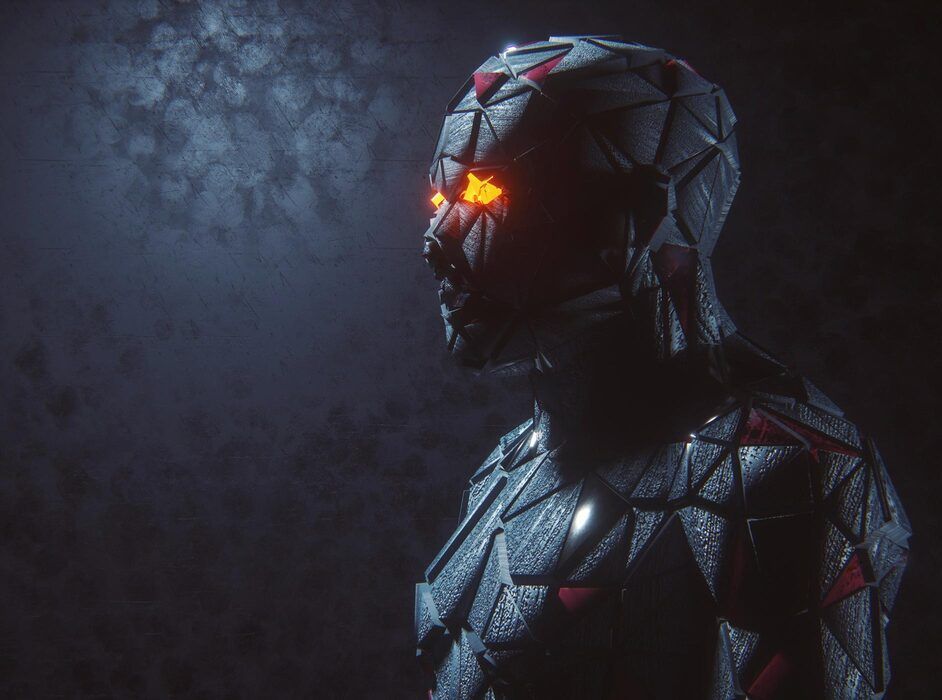SpaceX wants to put an advertising billboard in space. The company will have to follow legal frameworks for doing so, experts explain.



# On the Opportunities and.
Risks of Foundation Models.
AI is undergoing a paradigm shift with the rise of models (e.g., BERT, DALL-E, GPT-3) that are trained on broad data at scale and are adaptable to a wide range of downstream tasks. We call these models foundation models to underscore their critically central yet incomplete character.
This report provides a thorough account of the opportunities and risks of foundation models, ranging from their capabilities (e.g., language, vision, robotics, reasoning, human interaction) and technical principles (e.g., model architectures, training procedures, data, systems, security, evaluation, theory) to their applications (e.g., law, healthcare, education) and societal impact (e.g., inequity, misuse, economic and environmental impact, legal and ethical considerations).
Though foundation models are based on conventional deep learning and transfer learning, their scale results in new emergent capabilities, and their effectiveness across so many tasks incentivizes homogenization.
Homogenization provides powerful leverage but demands caution, as the defects of the foundation model are inherited by all the adapted models downstream.
Despite the impending widespread deployment of foundation models, we currently lack a clear understanding of how they work, when they fail, and what they are even capable of due to their emergent properties.
To tackle these questions, we believe much of the critical research on foundation models will require deep interdisciplinary collaboration commensurate with their fundamentally sociotechnical nature.
## Original Full Paper (211 pages)
https://arxiv.org/pdf/2108.07258.pdf.
Thanks to Folkstone Design Inc.
#AI #ML #FoundationModels #ComputerAndSociety #SocialImlications.
Photo by yuyeung lau on unsplash.
https://arxiv.org/abs/2108.07258?sf149288348=1

Since 1,988 and formation of the Posthuman Movement, and articles by early adopters like Max Moore were a sign our message was being received — although I always argued on various Extropian & Transhuman bulletin boards & Yahoo groups &c that “Trans” was a redundant middle and we should move straight to Posthuman, now armed with the new MVT knowledge (also figures on the CDR). There will be a new edition of World Philosophy, the first this millennium, to coincided with various Posthuman University events later this year. Here is the text:
THE EXTROPIAN PRINCIPLES V. 2.01 August 7 1992.
Max More Executive Director, Extropy Institute.
1. BOUNDLESS EXPANSION — Seeking more intelligence, wisdom, and.
personal power, an unlimited lifespan, and removal of natural, social.
biological, and psychological limits to self-actualization and self-realization. Overcoming limits on our personal and social.
progress and possibilities. Expansion into the universe and infinite existence.
2. SELF-TRANSFORMATION — A commitment to continual moral.
intellectual, and physical self-improvement, using reason and critical.
thinking, personal responsibility, and experimentation. Biological and.
neurological augmentation.
3. INTELLIGENT TECHNOLOGY — Applying science and technology to.
transcend “natural” limits imposed by our biological heritage and environment.
4. SPONTANEOUS ORDER — Promotion of decentralized, voluntaristic.
social coordination mechanisms. Fostering of tolerance, diversity.
long-term planning, individual incentives and personal liberties.
5. DYNAMIC OPTIMISM — Positive expectations to fuel dynamic action.
Promotion of a positive, empowering attitude towards our individual.
future and that of all intelligent beings. Rejection both of blind.
faith and stagnant pessimism.
These principles are further explicated below. In depth treatments can.
be found in various issues of EXTROPY: The Journal of Transhumanist.
Thought. (Spontaneous Order in #7, Dynamic Optimism in #8, and.
Self-Transformation in the forthcoming #10.)
1. BOUNDLESS EXPANSION
Beginning as mindless matter, parts of nature developed in a.
slow evolutionary advance which produced progressively more powerful brains. Chemical reactions generated tropistic behavior, which was.
superseded by instinctual and Skinnerian stimulus-response behavior.
and then by conscious learning and experimentation. With the advent of.
the conceptual consciousness of humankind, the rate of advancement.
sharply accelerated as intelligence, technology, and the scientific.
method could be applied to our condition. Extropians seek the.
continuation and fostering of this process, transcending biological.
and psychological limits as we proceed into posthumanity.
In aspiring to transhumanity, and beyond to posthumanity, we.
reject natural and traditional limitations on our possibilities. We.
champion the rational use of science and technology to void limits on.
lifespan, intelligence, personal power, freedom, and experience. We.
are immortalists because we recognize the absurdity of accepting.
“natural” limits to our lives. For many the future will bring an.
exodus from Earth — the womb of human and transhuman intelligence
expanding the frontiers of humanity (and posthumanity) to include.
space habitats, other planets and this solar system, neighboring.
systems, and beyond. By the end of the 21st Century, more people may.
be living off-planet than on Earth.
Resource limits are not immutable. The market price system.
encourages conservation, substitution and innovation, preventing any.
need for a brake on growth and progress. Expansion into space will.
vastly expand the energy and resources for our civilization. Living.
extended transhuman lifespans will foster intelligent use of resource.
and environment. Extropians affirm a rational, market-mediated.
environmentalism aimed at maintaining and enhancing our biospheres.
(whether terrestrial or extra-terrestrial). We oppose apocalyptic.
environmentalism, which hallucinates catastrophes, issues a stream of.
doomsday predictions, and attempts to strangle our continued.
evolution.
No mysteries are sacrosanct, no limits unquestionable; the.
unknown must yield to the intelligent mind. We seek to understand and.
to master reality up to and beyond any currently foreseen limits.
2. SELF-TRANSFORMATION
We affirm reason, critical inquiry, intellectual independence.
and intellectual honesty. We reject blind faith and passive.
comfortable thinking that leads to dogmatism, religion, and conformity. A commitment to positive self-transformation requires us.
to critically analyze our current beliefs, behaviors, and strategies.
Extropians therefore choose to place their self-value in continued.
development rather than “being right”. We prefer analytical thought to.
fuzzy but comfortable delusion, empiricism to mysticism, and.
independent evaluation to conformity. Extropians affirm a philosophy.
of life but distance themselves from religious thinking because of its.
blind faith, debasement of human dignity, and systematized.
irrationality.
Perpetual self-improvement — physical, intellectual.
psychological, and ethical — requires us to continually re-examine our lives. Extropians seek to better themselves, yet without denying their.
current worth. The desire to improve should not be confused with the.
belief that one is lacking in current value. But valuing oneself in.
the present cannot mean self-satisfaction, since an intelligent and.
probing mind can can always envisage a superior self in the future.
Extropians are committed to expanding wisdom, fine-tuning.
understanding of rational behavior, and enhancing physical and.
intellectual capacities.
Extropians are neophiles and experimentalists. We are.
neophiles because we track the latest research for more efficient.
means of achieving our goals. We are experimentalists because we are.
willing to explore and test the novel means of self-transformation.
that we uncover. In our quest for advancement to the tranhuman stage.
we rely on our own judgement, seek our own path, and reject both blind.
conformity and mindless rebellion. Extropians frequently diverge from.
the mainstream because they do not allow themselves to be chained by.
dogmas, whether religious, political, or social. Extropians choose.
their values and behavior reflectively, standing firm when required.
but responding flexibly to novel conditions.
Personal responsibility and self-determination goes.
hand-in-hand with neophilic self-experimentation. Extropians take.
responsibility for the consequences of our choices, refusing to blame.
others for the risks involved in our free choices. Experimentation and.
self-transformation require risks; Extropians wish to be free to.
evaluate the risks and potential benefits for ourselves, applying our.
own judgment and wisdom, and assuming responsibility for the outcome.
We neither wish others to force standards upon us through legal.
regulation, nor do we wish to force others to follow our path.
Personal-responsibility and self-determination are incompatible with.
authoritarian centralized control, which stifles the free choices and.
spontaneous ordering of autonomous persons.
External coercion, whether for the purported “good of the.
whole” or the paternalistic protection of the individual, is.
unacceptable to us. Compulsion breeds ignorance and weakens the.
connection between personal choice and personal outcome, thereby.
destroying personal responsibility. The proliferation of outrageous.
liability lawsuits, governmental safety regulations, and the.
rights-destroying drug war result from ignoring these facts of life.
Extropians are rational individualists, living by their own judgment.
making critical, informed, and free choices, and accepting.
responsibility for those choices.
As neophiles, Extropians study advanced, emerging, and future.
technologies for their self-transformative potential in enhancing our.
abilities and freedom. We support biomedical research with the goal of.
understanding and controlling the aging process. We are interested in.
any plausible means of conquering death, including interim measures.
like biostasis/cryonics, and long-term possibilities such as migration.
out of biological bodies into superior vehicles (“uploading”).
We practice and plan for biological and neurological.
augmentation through means such as effective cognitive enhancers or.
“smart drugs\.


The applications claimed Dabus, which is made up of artificial neural networks, invented an emergency warning light and a type of food container, among other inventions.
Several countries, including Australia, had rejected the applications, stating a human must be named the inventor. The decision by the Australian deputy commissioner of patents in February this year found that although “inventor” was not defined in the Patents Act when it was written in 1991 it would have been understood to mean natural persons – with machines being tools that could be used by inventors.
But in a federal court judgment on Friday, justice Jonathan Beach overturned the decision, and sent the matter back to the commission for reconsideration.

Following the approval of the consent law by Danish parliament in December 2020, a team of Danish developers released iConsent, which allows users to send a request for consent via their phone to a potential partner, who can then accept or reject the encounter. Via @WIREDUK
Denmark’s iConsent aims to support new sexual consent legislation – but does it lack the sex appeal for everyday use?

Brain–computer interfaces (BCIs) provide bidirectional communication between the brain and output devices that translate user intent into function. Among the different brain imaging techniques used to operate BCIs, electroencephalography (EEG) constitutes the preferred method of choice, owing to its relative low cost, ease of use, high temporal resolution, and noninvasiveness. In recent years, significant progress in wearable technologies and computational intelligence has greatly enhanced the performance and capabilities of EEG-based BCIs (eBCIs) and propelled their migration out of the laboratory and into real-world environments. This rapid translation constitutes a paradigm shift in human–machine interaction that will deeply transform different industries in the near future, including healthcare and wellbeing, entertainment, security, education, and marketing. In this contribution, the state-of-the-art in wearable biosensing is reviewed, focusing on the development of novel electrode interfaces for long term and noninvasive EEG monitoring. Commercially available EEG platforms are surveyed, and a comparative analysis is presented based on the benefits and limitations they provide for eBCI development. Emerging applications in neuroscientific research and future trends related to the widespread implementation of eBCIs for medical and nonmedical uses are discussed. Finally, a commentary on the ethical, social, and legal concerns associated with this increasingly ubiquitous technology is provided, as well as general recommendations to address key issues related to mainstream consumer adoption.

Researchers warn of the potential social, ethical, and legal consequences of technologies interacting heavily with human brains.
Surpassing the biological limitations of the brain and using one’s mind to interact with and control external electronic devices may sound like the distant cyborg future, but it could come sooner than we think.
Researchers from Imperial College London conducted a review of modern commercial brain-computer interface (BCI) devices, and they discuss the primary technological limitations and humanitarian concerns of these devices in APL Bioengineering, from AIP Publishing.

Boiling lobsters alive may be banned under a new law in the UK designed to protect the welfare rights of animals considered sentient beings. So, are lobsters sentient, do they feel pain, and what does science have to say about the moral quagmire of crustacean agony and cooking pots?
Back in May 2021, the UK government introduced a bill to formally recognize animals as sentient beings. Among the many facets of the bill, it aimed to limit the import of products from trophy hunting, push for fairer space requirements for farm animals, and stop people from owning primates as pets.
However, the bill only covered animals with a backbone and didn’t include any protections for non-vertebrates, which includes octopuses, squid, insects, and crustaceans. The Times reports that ministers are now preparing to back an amendment to the House of Lords, the upper house of the UK Parliament, to extend the legislation to shellfish and cephalopod mollusks. As per the report, this is likely to involve an outright ban on boiling lobsters alive.

Lawyers and venture capitalists said DeFi inhabits a largely unregulated grey area that could face pressure from the new Securities and Exchange Commission chair Gary Gensler. Some investors drew comparisons between DeFi and the boom in initial coin offerings four years ago, which collapsed following interventions by regulators.
Wave of ‘DeFi’ projects aim to reinvent exchanges, insurance, lending and more.